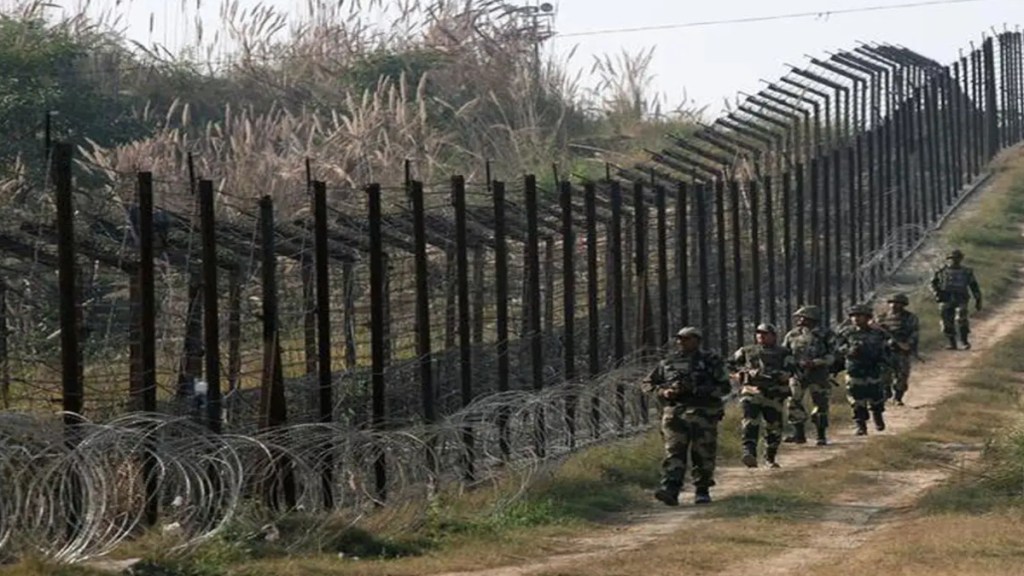A report by a global terror watchdog has highlighted the ways in which terrorism is now financed. As criminals move beyond traditional finance, digital platforms such as e-commerce, social media & messaging apps are being used to raise, store & transfer funds, explains Ritwik Sharma
l Why is the FATF report in the news?
THE FINANCIAL ACTION Task Force (FATF) released a report this week that says e-commerce platforms and online payment services are being misused for financing terrorist activities. The report, “Comprehensive Update on Terrorist Financing Risks”, also flags “state sponsorship of terrorism” and says that a range of publicly available sources of information and inputs hinted at some terrorist outfits continuing “to receive financial and other forms of support from several national governments”.
In June, while condemning the April terror attack in Pahalgam, in which 26 people were killed, the FATF had said that such strikes would not have been possible without financial support, adding that it would come out with a “comprehensive analysis
of terrorist financing”, compiling cases provided by its global network across 200 jurisdictions. The FATF says that since the release of its last such report in 2015, “terrorists have demonstrated a persistent ability to exploit the international financial system to support their activities and carry out attacks”.
l What does it say about e-commerce platforms?
THE REPORT SAYS terrorists tend to abuse e-commerce platforms, whose importance is growing in the economic landscape. The platforms can enable terror financing due to their transnational access and reach. Terrorists can pose as multiple buyers and sellers on the platforms, and use trade-based money laundering and terror financing techniques, such as over-/under-invoicing, to transfer goods and funds between each other. Terrorists have used these platforms for operational procurement (equipment, weapons, chemicals, 3D-printing material), benefiting from the discretion they offer over physical shops. They can also be used to sell items, including low-value ones and those obtained through wildlife exploitation or stolen cultural artefacts. Small cells and lone actors can use the platforms to sell personal items.
l Examples of e-commerce misuse
THE REPORT CITES the case study of an individual involved in terrorist activities and financing. He operated several
e-commerce accounts and maintained multiple bank accounts, receiving funds through platforms known to facilitate sale of weapons. He used social media for propaganda and his accounts were linked with the sale and purchase of weapons. His arrest in 2023 led to the nabbing of another terror financier. In another example, the probe into the 2019 Pulwama suicide bombing revealed cross-border movement of explosives into India and that a key component of the improvised explosive device used in the attack—aluminium powder—was procured from Amazon. The report also notes how social media platforms are increasingly integrating e-commerce functionalities, thus allowing direct transactions without leaving the app and enabling trade fraud by people linked to terror.
l Methods used to raise, move funds
WHILE INFORMAL MECHANISMS such as ferrying cash and the hawala route are widely used, large terrorist networks are adopting digital adaptations, including blockchain-based pseudo-anonymous transfers. Online payment services and mobile money platforms—particularly attractive in jurisdictions with lax regulation—are increasingly popular, even as terrorists exploit formal financial services including deposit accounts, wire transfers, and prepaid cards, despite improvements in transparency and identity verification. Digital platforms like social media, messaging applications and crowd-funding sites are being exploited for terror finance, particularly when they offer integrated payment services that bypass due diligence. The abuse of virtual assets has increased, while misuse of legal entities such as shell companies, trusts, and non-profit organisations remains a concern.
l What the watchdog recommends
THE REPORT HAS illustrated the use of e-commerce platforms and also virtual private networks to procure explosives and transfer funds to legit channels like PayPal. Given the wide-ranging options available for terror financing, it has recommended addressing the transnational dimensions of such risks through concerted, multilateral responses and international action. This includes prioritising the multilateral designation of terror organisations under the UN Security Council sanctions regime. It also recommends engaging sectors such as social media and messaging platforms that are not currently covered by the FATF standards (to combat money laundering and terror financing), as criminals increasingly avoid traditional financial systems. It suggests developing targeted public-private partnerships to better understand and address emerging threats. The watchdog has also called for strengthening risk analysis as it cautions that new terror financing schemes may emerge. “Enhancing our collective understanding of terror financing risks will require sustained efforts through regularly updated national, supra-national, sectoral, and emerging risk assessments in the years ahead,” it says.

